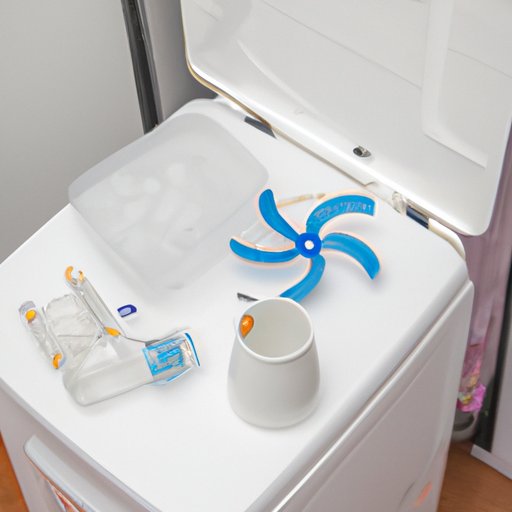Introduction
Defrosting is the process of removing the frozen layers of ice from the interior walls of a freezer. This is often necessary when the ice buildup becomes too thick, resulting in a decrease in efficiency and an increase in electricity bills. People need to defrost their freezers quickly for many reasons, such as to access food that has become frozen or to prevent the growth of bacteria and mold. Fortunately, there are several methods for quickly defrosting a freezer.
Unplug the Freezer
One of the best methods for quickly defrosting a freezer is to unplug it. Unplugging the freezer will turn off the cooling system and allow the ice to naturally melt away. The main benefit of unplugging the freezer is that it is safe and easy to do. However, it can take several hours for all the ice to melt, so it is not the fastest method.
To unplug the freezer, simply locate the power cord and remove it from the wall socket. Once the power cord has been removed, leave the freezer door open and wait for the ice to melt. After a few hours, you should be able to remove the ice with a scraper or cloth.

Place Hot Water Jugs Inside
Another quick way to defrost a freezer is to place hot water jugs inside. The advantage of using hot water jugs is that they can speed up the melting process. As the hot water jugs sit inside the freezer, the heat will help to melt away the ice. Additionally, hot water jugs are safe to use, though they should be handled with care.
To use hot water jugs, first fill them with hot tap water. Then place them on the shelves in the freezer and leave the door open. Allow the hot water jugs to sit in the freezer for at least 30 minutes before checking the progress. If necessary, replace the hot water jugs with new ones until all of the ice has melted.
Use a Hairdryer
Using a hairdryer to defrost a freezer can be a great option if you’re short on time. A hairdryer is ideal because it can quickly melt away the ice without having to wait for hours. It is important to note, however, that you should never use a hairdryer on the inside of the freezer. Doing so could cause damage to the freezer and its contents.
To use a hairdryer, start by setting it to the lowest heat setting. Then direct the nozzle of the hairdryer toward the outside walls of the freezer. Move the hairdryer around the walls of the freezer until the ice starts to melt. Be sure to check the progress regularly and move the hairdryer around to ensure that all of the ice is melting evenly.
Place Bowls of Hot Water Inside
Placing multiple bowls of hot water inside the freezer is another efficient way to defrost it quickly. The advantage of using multiple bowls of hot water is that it will help to speed up the melting process. Additionally, using multiple bowls of hot water is much safer than using a hairdryer.
To use multiple bowls of hot water, fill several bowls with hot tap water and place them inside the freezer. Leave the door open and allow the hot water to sit for at least 30 minutes before checking the progress. Replace the bowls of hot water as needed until all of the ice is melted.
Use a Fan
Using a fan to blow warm air into the freezer is another effective way to defrost it quickly. The advantage of using a fan is that it can help to speed up the melting process and make it more efficient. Additionally, a fan is safe to use and won’t cause any damage to the freezer or its contents.
To use a fan, start by setting it to the lowest speed setting. Then direct the airflow of the fan toward the inside of the freezer. Move the fan around the inside of the freezer until the ice starts to melt. Be sure to check the progress regularly and move the fan around to ensure that all of the ice is melting evenly.
Conclusion
Defrosting a freezer can be a tedious task, but with the right techniques, it can be done quickly and safely. Unplugging the freezer, placing hot water jugs inside, using a hairdryer, placing bowls of hot water inside, and using a fan are all effective ways to defrost a freezer quickly. However, it is important to remember to always use caution when defrosting a freezer to avoid any potential hazards.


